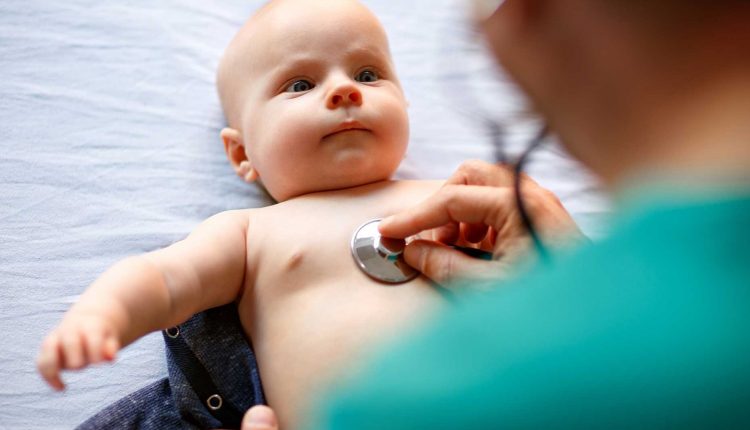
Chest pain in children: how to assess it, what causes it
Chest pain usually indicates common complaints such as anxiety and reflux. If it persists for several days, your paediatrician can help you understand whether to worry
Chest pain is a frequent symptom in children
It is capable of causing a strong state of anxiety and agitation in young patients and especially in their parents, since in the collective imagination chest pain is a phenomenon often associated with particularly dangerous events, first and foremost ischemic heart disease (angina pectoris, heart attack).
In fact, the close association between chest pain, ischemic heart disease and sudden death, which is very rare in paediatric age, is often the cause of considerable alarm.
PROFESSIONALS IN CHILD CARE IN NETWOK: VISIT THE MEDICHILD BOOTH AT EMERGENCY EXPO
Chest pain in children and adolescents is a relatively frequent reason for consulting the family paediatrician or going to the emergency department
In paediatric age this symptom is rarely related to life-threatening pathologies (e.g. cardiac), being much more frequent those of non-cardiac origin, tending to be benign in nature and tending to heal spontaneously or with adequate therapy.
More than 95% of children evaluated by a paediatric cardiologist for chest pain have no identifiable cardiac cause.
Chest pain originates from a wide variety of structures: chest muscles, ribs, costo-sternal joints, intercostal nerves, diaphragm, lung and finally the heart.
Thus, injury, irritation, infection of any of these tissues may be responsible for the symptom.
Occasionally, the pain may originate from another area, such as the abdomen, or be caused by stress or anxiety.
The following is a list of causes of chest pain in children:
- Musculoskeletal causes: inflammation of the cartilages connected to the highest ribs of the rib cage (costochondritis), trauma, muscle injury;
- Respiratory causes: cough, bronchitis, pneumonia, pleurisy, asthma;
- Psychogenic causes: stress, anxiety;
- Gastro-enteric causes: gastro-esophageal reflux, gastritis;
- Intoxications: carbon monoxide;
- Drug use: cannabinoids, cocaine;
- Cardiac causes: structural (abnormal origin of the coronary arteries, hypertrophic cardiomyopathy, aortic stenosis, mitral prolapse), inflammatory (pericarditis, myocarditis), arrhythmias, dyslipidaemia, Kawasaki disease, vasospasm, connective tissue disorders.
It occurs equally in both sexes, with a mean age of presentation of 13 years.
It may sometimes recur.
In most cases the medical examination will be normal and laboratory or instrumental data (ECG, chest X-ray) may be of little help.
In order to collect an accurate medical history, the child should be put at ease by facilitating the description of the pain in his/her own words (‘my heart was racing’, ‘it was as if a bird was flapping its wings in my chest’), assess the personality of the patient and parents, family interactions (to exclude psychological causes of the pain) and investigate whether there are any family members with cardiac diseases or sudden deaths.
Knowledge of the possible causes, a thorough history and a careful examination will allow a diagnosis to be made and the most appropriate intervention strategy to be adopted.
In case of chest pain, do not panic
Remember that it is usually due to a benign or self-limiting disease.
It is important for parents to know what the characteristics, the warning signs, of chest pain related to a major illness may be, which should always be urgently evaluated in the emergency room:
- If the chest pain is very intense;
- If it appears under stress;
- If it is diffuse, little affected by position;
- If it is associated with sweating, nausea, loss of consciousness, breathing disorders, fever, intense sweating;
- If the child reports a disturbing sensation in the cardiac region or an increase in the frequency of the rhythm;
- If the child is suffering from an already diagnosed heart disease.
All the above points should be considered with even greater attention if there is a family history of cardiac syncope, heart disease or sudden death under 50 years of age.
In the absence of the above characteristics, the majority of children and young people with chest pain can be evaluated by the family paediatrician, who can suggest a painkiller and assess whether further diagnostic work-up with haematochemical or radiological examinations is necessary or whether a cardiological examination with ECG is appropriate.
In selected cases, the cardiologist will then decide whether to perform more in-depth examinations, such as an echocardiogram, ultrasound or cardiology test:
An echocardiogram, targeted ultrasound of the heart, to look for structural abnormalities;
Other tests such as 24-hour Holter ECG, stress tests, etc.
Read Also:
In-Hospital Cardiac Arrest: Mechanical Chest Compression Devices May Improve Patient Outcome
CT Scan Of The Chest In Smokers: What It Is Used For And Why It Is Essential



